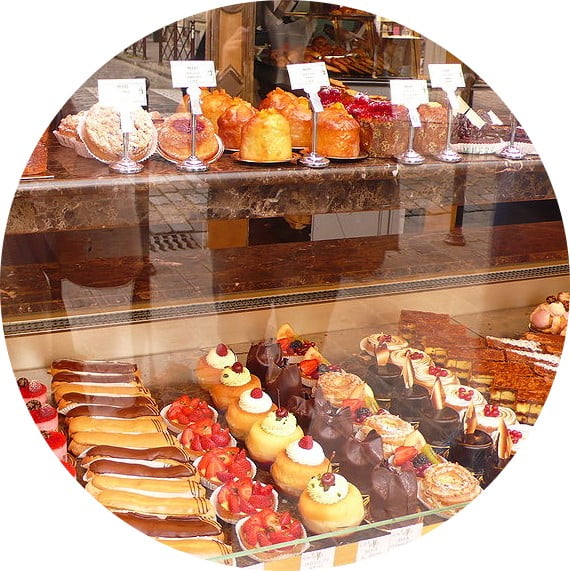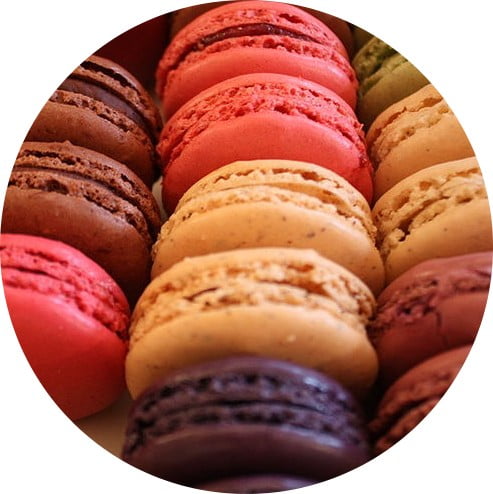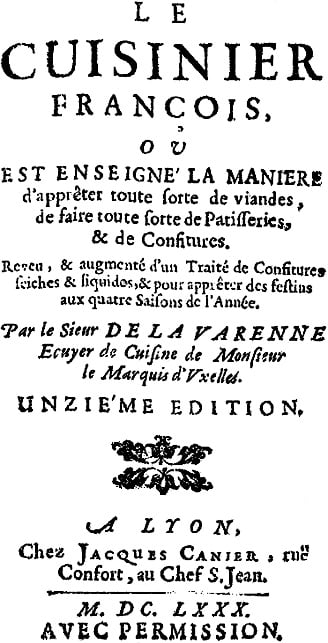Sink your teeth into the history of French pâtisseries
 Need an excuse to visit the pâtisserie? How about brushing up on your history?
Need an excuse to visit the pâtisserie? How about brushing up on your history?
Uncovering the origins of some of France’s famous delicacies is harder than you might imagine. There are many myths surrounding French pâtisseries, but not too many hard facts.
Pastel meringue-filled macarons were the iconic petits fours of Marie Antoinette who had them all around her boudoir, oui? Not likely. They seem most likely to have been created some years after the Queen left Versailles.
The French cookbook
A good place to start exploring this history is with one of the earliest and most famous cookbooks, Le Cuisinier françois, published in 1651, by François Pierre, Sieur de la Varenne. Varenne was born near Châlons-sur-Saône, in Burgundy and he worked as a professional chef in some of the greatest households of his era. He gathered together his best recipes and recommendations into this popular text, which saw many re-editions.
And yes, for the record, Varenne included many recipes for frogs’ legs – in fritters, ragouts, and in potages, no less.
It was soon followed by further books that covered breads and pâtisseries as well, which at the time were distinct trades requiring different skills and training.
French festivals and fats
Varenne’s cookbook highlighted the importance of the religious calendar. This determined what ingredients could be used at different times of the year, and led to an inventive use of ‘mock’ ingredients when the real were not permissable.
Some of France’s favourite regional treats are still connected to religious events. Apart from the well-known Galette des Rois, commemorating the visit of the three kings to the baby Jesus, there is also the bugne.
This rich donut-like treat from the Savoy region was made in the lead-up to Lent, using up certain fats which, along with meat, eggs and dairy products, could not be used during Lenten fasting. The bugne features in a popular children’s nursery rhyme about the pre-Lenten festival of Mardi Gras (Fat Tuesday) and it even gets a mention in the famous novel, ‘Pantagruel’ (1532), by Renaissance author François Rabelais.
Queen’s favourites and whore’s farts
 Varenne’s cookbook also shows us what a key role salt and sugar played as preserving agents in the seventeenth century. A great many sweetmeats involved sugar, nuts and egg whites with varied waters added for flavouring. This included macarons, which Varenne describes as made from almond sugar, flavoured with rosewater and in the traditional shape of the lozenge. These simple biscuits were a far cry from the dainty round pastel sandwich variety we know today.
Varenne’s cookbook also shows us what a key role salt and sugar played as preserving agents in the seventeenth century. A great many sweetmeats involved sugar, nuts and egg whites with varied waters added for flavouring. This included macarons, which Varenne describes as made from almond sugar, flavoured with rosewater and in the traditional shape of the lozenge. These simple biscuits were a far cry from the dainty round pastel sandwich variety we know today.
A personal favourite is the evocatively-named pets de putain, or whore’s farts, a delicate combination of egg whites, sugar powder, and orange-blossom water. These were rolled into a walnut-sized shape (presumably what was imagined to be the size of a whore’s fart) and gently baked. Certainly tastier than they sounded!
Twice-cooked treats
Of course the language of historical cooking is all around us. Even the word, biscuit, is one example, meaning bis cuit, or twice cooked.
Can’t decide which French pâtisseries to try? Why not eat them in historical order!
What are your favourite French pâtisseries? Share your thoughts in the comment box below.
Image Credits:1. The display in Pâtisserie Meert, Lille, by Welleschik via Wikipedia.
2. Le cuisiner françois, by François Pierre de la Varenne via Wikipedia.
3. Edible rainbow, Macarons from Ladurée in Paris, by Sonny Ripert via Wikipedia.








One Twitter thread about this article makes a connection between “whore’s farts” and “nun’s farts”, which are still available at bakeries all over France. Probably the same product rebranded for more delicate modern-day sensibilities. And perhaps the origin of “po-tay-to / po-tah-to”…
The World has gone to mush since McDonalds announced that they would sell macarons… My favourite French pastry is a creamy custard filled profiterole adorned with crunchy toffee. I still remember two or three I had in Paris two years ago. I am going to be so fat this time next year:)
Such an interesting article Susan! I had no idea about the origins of these pastries.
And the ‘Le cuisinier François’ cookbook reminds me of an old cookbook my grandmother gave to me a few years ago… I’ll definitely open it again when I get back home!